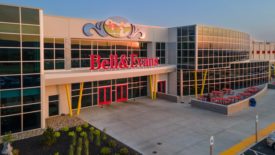Articles by Michael Costa
Our 2022 winner established a new benchmark for innovation and efficiency in a poultry plant, while elevating employee and animal welfare.
Read More
The State of Food Manufacturing in 2022
Our 43rd annual report highlights the trends and challenges shaping the industry today
July 6, 2022
Progressive Pet Food Packaging
Pets don’t make buying decisions—people do. See why packaging plays an important role in grabbing the attention—and dollars—of pet owners today
May 6, 2022
Fabulous Food Plants
Fab Food Plant: Tyson’s innovative case-ready meat facility in Eagle Mountain, Utah
A look inside the 600,000-square-foot structure offers a glimpse into the future of case-ready meat plants.
April 8, 2022
Alternative Proteins
Cell-by date: The state of cultivated meat
Where the industry stands today and what barriers still exist for commercial-scale production.
March 8, 2022
Elevate your expertise in food engineering with unparalleled insights and connections.
Get the latest industry updates tailored your way.
JOIN TODAY!Copyright ©2025. All Rights Reserved BNP Media.
Design, CMS, Hosting & Web Development :: ePublishing








.jpg?height=168&t=1646759025&width=275)
